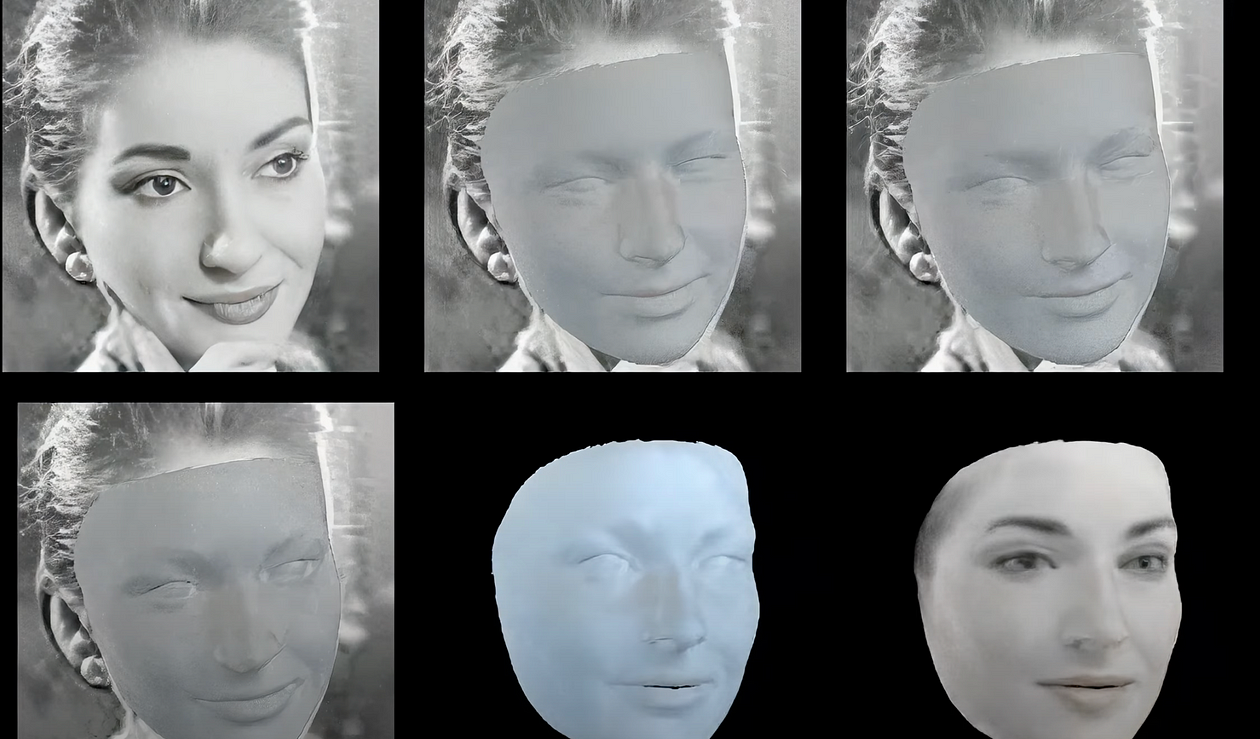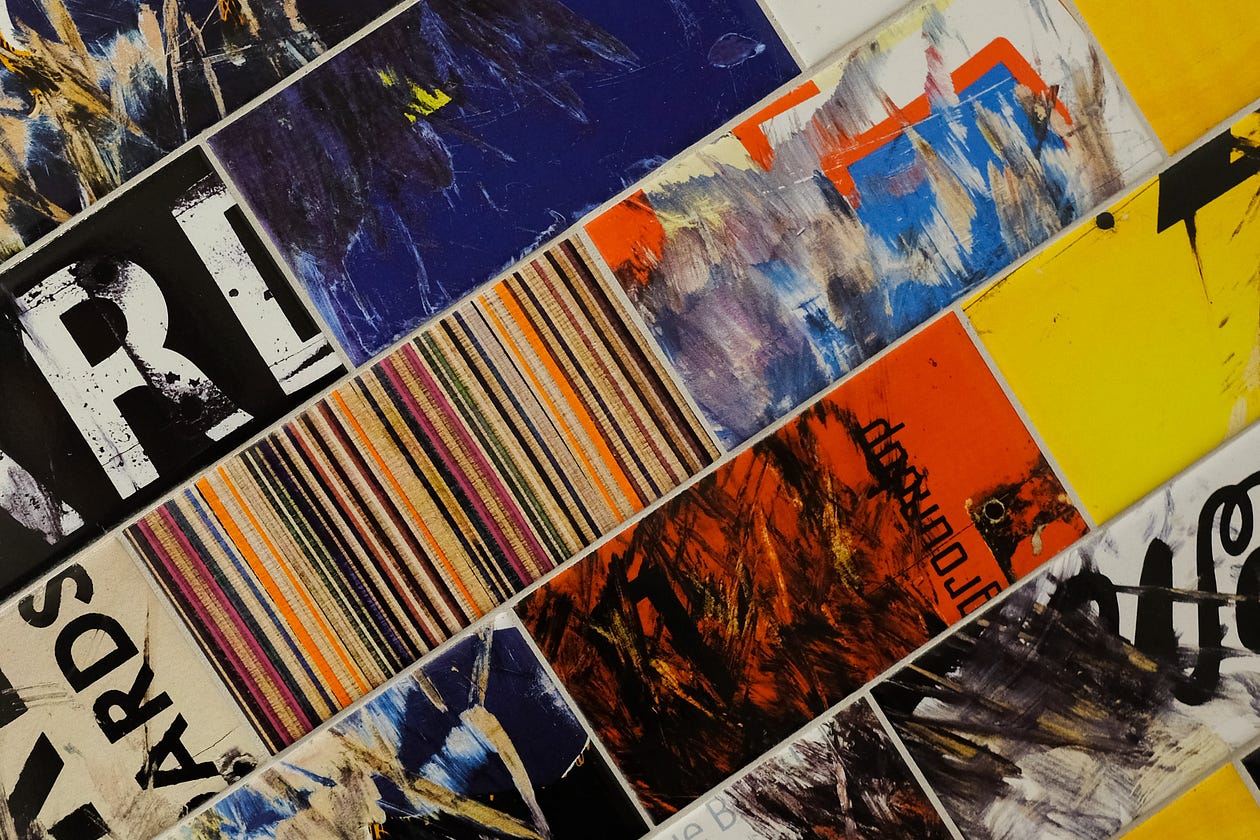The link between Victorian portraiture and AI death tech

Interactive internet-based technologies are transforming how we understand death, grieving, and coping with loss. The societal lockdown during Covid 19 produced a radical shift in communication that affected traditional death rituals. Saying goodbye to and remembering the recently deceased was conducted on online video streaming platforms.
Startups working in the death tech or grief tech industry have designed different approaches that enable users to communicate with the dead, via text, video, audio, or photorealist avatars. The technology represents a recent shift from photography to artificial intelligence (AI) as a tool for remembering the deceased.
Several death tech companies have claimed that AI technology can create the essence of a person. For the first time, the deceased can communicate with the living via a chatbot (grief bot), or animated avatar. In 2016, James Vlahos created an AI chatbot from conversations with his late father. In 2019, he founded Hereafter AI, a web application that, according to its website, helps “preserve meaningful memories about your life and interactively share them with the people you love.” In 2020, You, Only Virtual designed a platform where users could create individual virtual personas of the deceased, called Versonas. The platform claims to recreate “the unique dynamics of a relationship and generate an authentic essence (Versona), so that one can continue to share precious moments with a loved one, even after physical death.”
In 2021, Microsoft patented a conversational chatbot designed after a real person to allow users to have virtual conversations with the deceased. In the same year, AI tech company D-ID created Deep Nostalgia for the online genealogy platform, My Heritage. The app created animated video loops from still photographs of the deceased and was a global phenomenon, with more than 100 million users in its first year of release.
In 2022, conversational AI company StoryFile presented an interactive AI video at the funeral of the founder’s deceased mother. The company states on its website that users can “make your experiences and your essence permanent. Our technology allows you to make connections and impact lives, even after you’re gone.” The more we interact with technology, the more our digital selves evolve into realistic representations. The recent growth in the AI death tech industry, where posthumous digital images and messages make the reanimation of the dead by AI the norm, is reconstructing the essence of humanity, creating perhaps, a new essence. But are these claims by big tech genuine or does the familiarity of the term that is borrowed from photography, a catch-all phrase to sell a product?
Post-Mortem Portraits
Since its invention in the 19th century, portrait photography has been a medium that captures a person’s likeness or physical appearance. However, the concept of essence in portrait photography adds more meaning to the image. The photographer aims to capture something intangible that goes beyond the subject’s physical appearance, revealing their unique character, personality, and identity.
Photography is also associated with death, influencing how people remember and mourn the dead. In an era of high mortality rates in Victorian Britain and during the American Civil War, and the absence of commissioned photographs during a loved one’s lifetime, a post-mortem photograph was proof of their existence and helped keep the deceased memory alive. Portrait commissions were influenced by the appearance of the deceased and survivors drew comfort from their peaceful exteriors. Post-mortem portraits could provide comfort and help survivors reflect on their loss.
The post-mortem portrait was a memory image and provided proof that death had happened. “Photographs are relics, material objects of the deceased and connect the dead with the living,” Barthes, Camera L, p80–81.
Photography facilitated communication between the living and the dead that was linked with religion and the idea of an afterlife. The Christian faith was a major influence on people’s lives in the 19th century. Mortality rates were high, death was part of life. The body was important in religious terms as an instrument of heavenly virtue, the self fragmented temporality into spirit and matter, and, according to Christian beliefs, Jesus Christ’s immortal soul would be reunited with the resurrected body. Physical remains were thought to continue a bodily existence beyond the grave and were treated with reverence and respect by the bereaved before disposal.
Within the context of Christian beliefs, the dead body could be viewed as precious and beautiful, “a worthy recipient of tender loving care and a subject for memorialization by the camera,” (Audrey Linkmen, p14, Photography and Death). The post-mortem portrait filled a desire to see and remember the person in death.
Other reasons for the commission of post-mortem portraits related to absent family and friends. Rituals surrounding death meant that the bereaved felt an obligation or duty towards the dead. Protestants believed a “good” death should occur in the home, surrounded by family, comforted that they would meet again in heaven. For families who couldn’t attend the bedside due to work, illness, or immigration, perhaps a post-mortem photograph provided consolation. P15. With the invention of the carte-visite, portraits were given to family and friends who were not present at the funeral.
In the 1870s, retouching was widely practiced in portrait photography. Photographers worked on glass negatives with a retouching medium, lead pencils, and sharp knives to enhance the image of the dead. Eyes were drawn on eyelids to give the impression of the dead at rest or asleep. In the second half of the 19th century, profound changes overtook death practices as mortality rates declined and Christian beliefs in the afterlife waned.
The development of a new style of post-mortem portrait began in North America in the 1880s which replaced traditional mourning rituals from coffins to caskets. Caskets held precious objects and were padded for comfort, larger than a traditional coffin, and made in different colors or materials like metal or glass. Caskets were a barometer of a family’s wealth and a post-mortem portrait could promote the family’s stature.
Changes in how the dead body was cared for and disposed moved from the family home to funeral parlors and the cemetery. Funeral directors now controlled the sense and events of the last memory pictures. Post-mortem portraits lost their meaning while the living distanced themselves from the dead and disengagement from the disposal of the body meant that death became something to be feared. Paying the last respite in the home gradually died out and “death ceased to share the spaces occupied by the living.
In the 1870s, the physical body came to be regarded by some as the “vacated tenement,” disposable and inessential in comparison to the soul. The bereaved ceased to revere the corpse and concentrated on the eternal spirit of the individual. William Mumler’s 1872 portrait of Mary Todd Lincoln sitting in front of the image of the late President Lincoln possessed a spiritual or magical quality that gave it a sense of presence, “as if it were less an image or likeness than the image itself, the very identity of the sitter.”
Not understanding the technology of the time, the Victorians believed that ghosts could be captured in a photograph and that the image was a conduit to the afterlife. Spirit photos marked a “shift in faith, of a belief in a man’s ability to reveal the nature and workings of the divine and in technology’s ability to enhance man’s powers of perceptions.” Spirit photos eased people’s fear of death by emphasizing the individual of the soul and supporting the links between the physical and spiritual realms.
Photography facilitated communication between the living and the dead which was linked with Christianity and the idea of the afterlife. Matthews describes the photograph as “windows through which survivors can use their imagination to communicate with the spiritual world of the dead.”
Post-mortem portraits fell out of trend by the middle and upper classes but the working classes, looking to emulate the higher classes, continued the practice into the 20th century. In the early 20th century, post-mortem portraits declined in popularity in North America and Europe, assisted by the considerable losses of the two world wars, and ideas and beliefs about the nature of the self changed. In the absence of any sympathetic understanding of the experiences, attitudes, values, and religious practices of previous generations, post-mortem portraits were considered macabre and photos were probably thrown away. Immigrants kept up the tradition of post-mortem portraits and sent photographs home as a connection to the old country to maintain family bonds.
Essence in Portraiture
Julia Margaret Cameron’s 19th-century daguerreotype portraits were influenced by Christian beliefs and aesthetics. Her images of important men and women posed in religious scenes were often captured out of sharp focus to convey a spiritual aesthetic, an intimate act of communication between one soul and another, “recording faithfully the greatness of the inner as well as the features of the outer man.” Cameron aimed to capture the sitter’s likeness, “as by which the qualities of the inner soul were manifest on the portrait.”
Lavatar saw the link between the inner and outer state and selfhood as an aesthetic, ontological relation, and construction based on techniques of the self. He saw the construction of the self through an interpretation of the relationship of the self with others and believed that the self does not exist in isolation but with others, and is constructed with the participation of the viewer. Photography then, is a representational device and the act of photography is the relationship between the self and the viewer.
Looking at AI death tech platforms in context with Victorian post-mortem photography and attaining the sitter’s essence in portraiture, we can see a link between technology, consumerism, and society’s view on death and bereavement.
Ginger Liu is the founder of Ginger Media & Entertainment, a Ph.D. Researcher in artificial intelligence and visual arts media — specifically death tech, digital afterlife, AI death and grief practices, AI photography, entertainment, security, and policy, and an author, writer, artist photographer, and filmmaker. Listen to the Podcast — The Digital Afterlife of Grief.
Ginger Liu is a writer who covers the latest developments in artificial intelligence, entertainment, and art.




